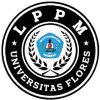PEMBELAJARAN COOPERATIVE INTEGRATED READING AND COMPOSITION (CIRC) TERHADAP KEMAMPUAN NUMERASI DALAM MENYELESAIKAN SOAL PEMECAHAN MASALAH
DOI:
https://doi.org/10.37478/jpm.v4i3.2790Abstract
Current mathematics education should meet requirements that involve critical thinking skills, real-world relevance, the use of technology, and communication and collaboration abilities. In this regard, students need to have good numeracy skills, which involve the ability to use numbers and mathematical symbols in everyday problem-solving, such as calculations and data interpretation. Numeracy skills are important in shaping responsible and competent individuals. Additionally, problem-solving strategies are also at the core of mathematics teaching. Research has shown that the use of the Cooperative Integrated Reading and Composition (CIRC) instructional model has positive consequences for mathematical problem-solving proficiency. With the CIRC model, students can effectively improve their numeracy skills and mathematical problem-solving strategies. This research was conducted using a quantitative method, t-test, and paired sample test. The research subjects consisted of 50 eighth-grade students at SMP Negeri 7 Tungkal Jaya. Data was collected through documents, observations, and tests. Data analysis was done by conducting a paired sample t-test to assess the significance of the influence of CIRC learning on students' problem-solving competence. It is important to conduct further research involving larger samples and considering factors that may potentially affect learning outcomes.
Downloads
Keywords:
CIRC, Numeracy Skills, Problem SolvingReferences
Arikunto, S. (2019). Prosedur penelitian suatu pendekatan praktik. Jakarta: Rineka Cipta. Google Scholar
Ariyana, I. K. S., & Suastika, I. N. (2022). Model Pembelajaran CIRC (Cooperative Integrated Reading And Composition) sebagai Salah Satu Strategi Pembelajaran Matematika di Sekolah Dasar. Jurnal Ilmiah Universitas Batanghari Jambi, 22(1), 203. https://doi.org/10.33087/jiubj.v22i1.2016
Baharuddin, M. R., Sukmawati, & Christy. (2021). Deskripsi Kemampuan Numerasi Siswa Dalam Menyelesaikan Operasi Pecahan. Pedagogy: Jurnal Pendidikan Matematika 6, 3(2), 90–100. https://e-journal.my.id/pedagogy/article/view/1607
Dewayani, S., Retnaningdyah, P., Antoro, B., Susanto, D., Ikhwanudin, T., Fianto, F., Muldian, W., Syukur, Y., & Setiakarnawijaya, Y. (2021). Panduan Penguatan Literasi dan Numerasi di Sekolah Dasar. http://repositori.kemdikbud.go.id/22599/1/Panduan_Penguatan_Literasi_dan_Numerasi_di_Sekolah_bf1426239f.pdf
Hadijaya, Y. (2013). Menyusun Strategi Berbuah Kinerja Pendidikan Efektif. Perdana Publishing. http://repository.uinsu.ac.id/66/1/Menyusun Strategi........pdf
Kemendikbud. (2017). Materi Pendukung Literasi Numerasi. Kementrian Pendidikan Dan Kebudayaan, 8(9), 1–58. https://repositori.kemdikbud.go.id/11628
Mayasri, H. N. (2019). Efektivitas Model Pembelajaran Kooperatif Tipe Circ terhadap Keterampilan Siswa dalam Menyelesaikan Soal Cerita Matematika. Hipotenusa: Journal of Mathematical Society, 1(1), 15-21.. https://doi.org/10.18326/hipotenusa.v1i1.15-21
Nursakiah, N. (2017). Pembelajaran Kooperatif Tipe CIRC. Saintifik, 3(2), 106–116. https://doi.org/10.31605/saintifik.v3i2.150
Putri, I., & Fauziah, O. (2018). Pengaruh pembelajaran model circ terhadap hasil belajar matematika siswa kelas 2 sdn jatimulyo 1 malang [Universitas Muhammadiyah Malang]. https://eprints.umm.ac.id/39093
Rosmalah, R., Sudarto, S., & Hur’ainun, K. (2022). Hubungan antara Kemampuan Literasi Numerasi dengan Hasil Belajar Matematika Siswa Kelas Tinggi. JPPSD: Jurnal Pendidikan Dan Pembelajaran Sekolah Dasar, 2(4), 334. https://doi.org/10.26858/pjppsd.v2i4.36522
Rostika, D., & Junita, H. (2017). Peningkatan Kemampuan Pemecahan Masalah Siswa SD Dalam Pembelajaran Matematika Dengan Model Diskursus Multy Representation ( Dmr ). Jurnal Pendidikan Dasar, 9(1), 35–46. https://doi.org/10.17509/eh.v9i1.6176
Sartika, D., Musyifah, S., & Syarifuddin, S. (2022). Pengaruh Model Pembelajaran Cooperatif Integrated Reading and Composition (CIRC) terhadap Hasil Belajar Siswa di Kelas VIII MTsN 4 Bima. DIKSI: Jurnal Kajian Pendidikan Dan Sosial, 3(1), 38–50. https://doi.org/10.53299/diksi.v3i1.139
Sugiandi, Asep. Imswatama, Aritsya .Setiani, A. (2022). Penerapan Model Pembelajaran Cooperative Integrated Reading and Composition (CIRC) Terhadap Kemampuan Pemecahan Masalah Matematis Siswa di MTs Asshohibiyah. VIII, 72–81. https://jurnal.ummi.ac.id/index.php/JUT/article/view/1661/988
Supriyadi, S. (2018). Penerapan Metode Cooperative Integrated Reading and Composition (Circ) Untuk Meningkatkan Kemampuan Siswa Dalam Berbicara Dengan Bahasa Inggris. Jurnal Litbang: Media Informasi Penelitian, Pengembangan Dan IPTEK, 14(2), 131–138. https://doi.org/10.33658/jl.v14i2.115
Suwanto, Aisyah, N., Santoso, B., & Sitasi, C. (2019). Strategi Siswa Dalam Meneyelesaikan Soal Pemecahan Masalah Matematika SMA Negeri 1 Indralaya. Cakrawala, 19(1), 139–148. http://ejournal.bsi.ac.id/ejurnal/index.php/cakrawalahttps://doi.org/10.31294/jc.v19i1
Downloads
Published
How to Cite
Issue
Section
License
Copyright (c) 2023 Indika Aprillia Fitriana, Andinasari Andinasari, Rahma Siska Utari

This work is licensed under a Creative Commons Attribution-ShareAlike 4.0 International License.













